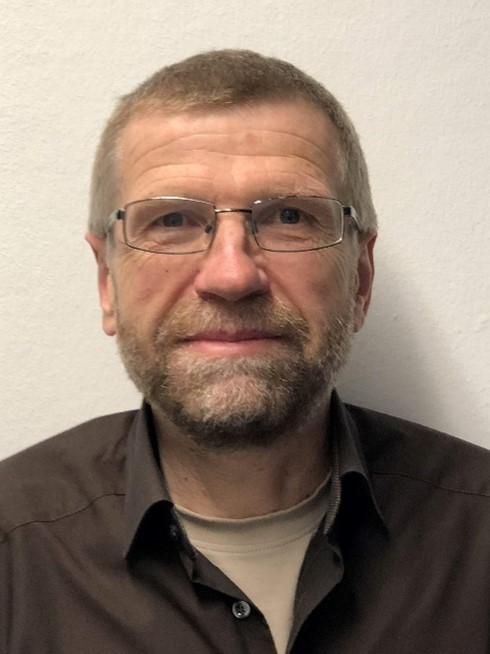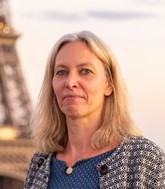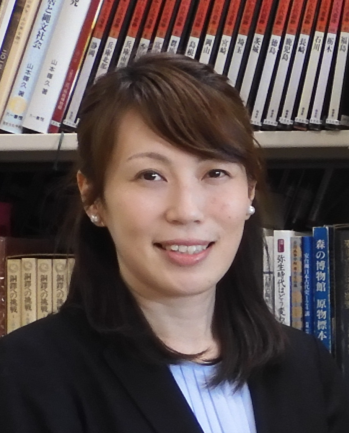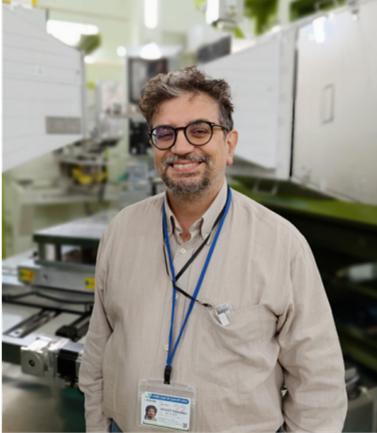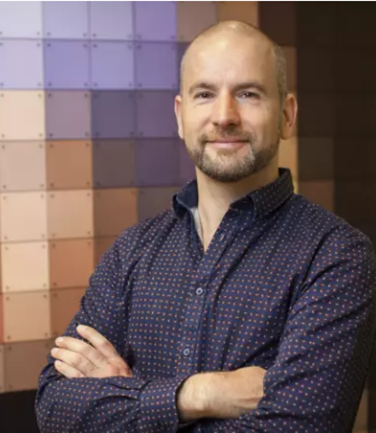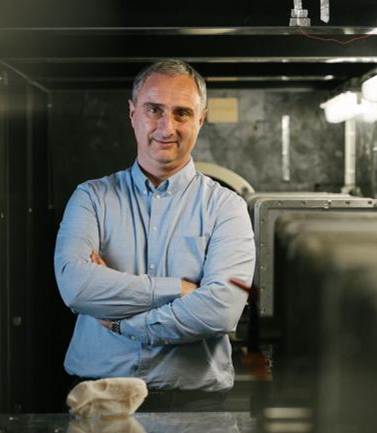Keynote Speakers
Hesheng Chen
China Spallation Neutron Source (CSNS), China
Michael Hofmann
Forschungs-Neutronenquelle Heinz Maier-Leibnitz (FRM II), Germany
Ina Reiche
Centre national de la recherche scientifique (CNRS), France
Manako Tanaka
Tokyo University of the Arts, Japan
Eberhard Lehmann
Paul Scherrer Institute (PSI), Switzerland
Francesco Grazzi
Consiglio Nazionale delle Ricerche, Istituto di Fisica Applicata (CNR-IFAC), Italy
Lambert van Eijck
Technische Universiteit Delft (TU-Delft), Netherlands
Nikolay Kardjilov
Helmholtz-Zentrum Berlin (HZB), Germany
Tianjiao Liang
China Spallation Neutron Source (CSNS), China
Yong Lei
The Palace Museum, China
More Details
Michael Hofmann
Between 1984 and 1990 Michael Hofmann studied Chemistry and Crystallography at the Eberhard-Karls University in Tübingen/ Germany. At the same university he also finished his PhD in 1994 on with a topic in structural solid-state chemistry. After his PhD he switched from chemistry to work in neutron scattering when he did a Post-Doc at the ISIS Neutron Facility in the UK until 1996 and later became a staff scientist at the E6 diffractometer at the Hahn-Meitner Institute in Berlin/Germany. From 2000 he moved back to the ISIS Neutron Facility as a Senior Science Officer in their Crystallography group before taking up his current position at the German Neutron Source FRM II (@MLZ) in Garching near Munich. There he is instrument responsible and the group leader of the group operating the materials science diffractometer STRESS-SPEC. Since 2013 he is also coordinator of the science group “Materials Science” at the Heinz Maier-Leibnitz Zentrum (MLZ), TU Munich, Germany. Besides that, he also holds the position of Professorial Visiting Fellow at the School of Physical Environmental and Mathematical Science at the University of New South Wales in Canberra, Australia.
The Garching science campus of the TU Munich is home to Germany’s sole neutron source FRM II. The Heinz Maier-Leibnitz Center (MLZ) is the umbrella for the scientific exploitation of the neutron research reactor and it is operated as an open access user facility. It hosts a unique suite of high-performance neutron scattering instruments to encourage and enable state-of-the-art research in such diverse fields as physics, chemistry, biology, earth sciences, engineering or cultural heritage investigations.
Presentation Title: Neutrons for Archaeological and Cultural Heritage studies @ FRM II / MLZ.
Presentation Abstract: This presentation will give a brief overview on our facility and the possibilities neutrons offer in cultural heritage studies. Here the main advantage of neutrons arises from the fact that the interaction of neutrons with material is relatively weak and not related to the number of electrons, and consequently the penetration depth of neutrons is some orders of magnitude larger than that of laboratory X-ray diffraction. This is particular essential for the non-destructive texture analysis of archaeological or cultural heritage objects as usually no additional treatment of the samples (e.g. polishing) is necessary. I will highlight a few examples of relevant studies undertaken with neutrons in this field to demonstrate the broad range of possible applications at a facility like the FRM II.
Ina Reiche
Ina Reiche is a specialist in heritage science, with a career spanning since 2003 at the Centre National de la Recherche Scientifique (CNRS). Currently, she holds the position of CNRS Research Director and serves as the Director of the UAR3506 CNRS-C2RMF-ChimieParistech-PSL Lab-BC in Paris, France, based at the C2RMF within the Louvre Museum.
Ina Reiche pursued studies in chemistry and art history at the Freie Universität Berlin, culminating in a Ph.D. in Material Science and a Habilitation thesis in Analytical Chemistry. She also served as the Director of the Rathgen research laboratory in Berlin, Germany, from 2014 to 2019.
In addition to her research and leadership roles, Ina Reiche is actively involved in various scientific boards, including the SOLEIL synchrotron in France and the LEIZA Institute in Mainz, Germany. She also holds the position of President of the scientific committee of the SR2A conferences, showcasing her commitment to advancing heritage science and interdisciplinary research.
Presentation Title: Chemical and mineralogical analyses of Palaeolithic pigments from Lascaux and Altamira caves.
Manako Tanaka
Manako Tanaka completed her doctoral studies in conservation of cultural properties at Tokyo University of the Arts, focusing on conservation science. Her research primarily centers on material science investigations of metal artifacts, with a particular emphasis on Japanese swords and matchlock guns, as well as coloring materials.
In recent years, Manako Tanaka has been at the forefront of nondestructive research on cultural properties, leveraging advanced techniques such as synchrotron radiation, neutrons, and muons. Her work in this area has contributed significantly to the understanding and preservation of cultural heritage.
Furthermore, Manako Tanaka has actively participated as a committee member in numerous international and national conferences within her field of expertise, demonstrating her dedication to advancing conservation science and cultural heritage research.
Presentation Title: Non-destructive research on materials and manufacturing techniques of metallic cultural properties by complementary use of neutron and synchrotron radiation.
Francesco Grazzi
Francesco Grazzi is a Senior Researcher at the Consiglio Nazionale delle Ricerche, Istituto di Fisica Applicata “Nello Carrara” (CNR-IFAC), which is the National Research Council of Italy's Institute for Applied Physics. He is also an associate researcher at the Istituto Nazionale di Fisica Nucleare (National Nuclear Physics Institute of Italy) and an adjunct professor at the Physics department of the Università di Firenze.
Since 2006, Francesco Grazzi has been involved in the development and application of neutron methods for analyzing material structure and morphology. His research primarily focuses on utilizing neutron diffraction, neutron imaging, and Bragg Edge Neutron Transmission techniques for characterizing metal artifacts of historical, archaeological, and industrial significance. He has collaborated with the ISIS neutron source on the construction of the INES, NIMROD, and IMAT beamlines.
Francesco Grazzi actively collaborates with various archaeological and restoration institutes and museums, showcasing his dedication to advancing the field of material analysis and preservation through neutron-based techniques.
Presentation Title: Study of technological development in historical metallurgy for different world civilizations, non invasively investigated through neutron methods.
Lambert van Eijck
Lambert van Eijck embarked on his professional journey as an instrument scientist specializing in quasi-elastic neutron spectroscopy at the prestigious Institut Laue Langevin in France. Throughout his career, he has been dedicated to the development of neutron instrumentation for materials science applications, showcasing his expertise in this field.
In recent years, Lambert van Eijck has shifted his focus towards the advancement of neutron-based methods for heritage science. He is currently engaged in this endeavor at the TU Delft Reactor Institute in the Netherlands, where he continues to contribute to the development of innovative techniques and tools for the analysis and preservation of cultural heritage materials. Lambert's work underscores his commitment to leveraging neutron-based technologies for the study and conservation of heritage artifacts.
Presentation Title: Quantifying elemental compositions of bulk heritage objects through data fusion of neutron tomography and gamma spectroscopy.
Nikolay Kardjilov
Nikolay Kardjilov is a distinguished researcher at Helmholtz Zentrum Berlin (HZB) in Germany, renowned for his pioneering work in developing innovative experimental techniques for investigating the structure and properties of materials using neutron radiation. His research spans scientific and industrial applications, with a primary focus on advancing neutron imaging methodologies.
Dr. Kardjilov's notable contributions include the construction of the neutron imaging instrument at HZB and the development of cutting-edge methods that leverage various contrast mechanisms, such as phase- and diffraction-contrast imaging, visualization of magnetic fields using polarized neutrons, and high-resolution imaging applications. These techniques have been widely adopted at research facilities worldwide, facilitating a diverse array of scientific and industrial investigations.
In the realm of archaeological research, Dr. Kardjilov has collaborated with guest researchers on several impactful projects. These include the examination of submerged artifacts from shipwrecks near Sicily, Italy, the structural analysis of ancient Egyptian bronze statues, and the characterization of materials found in historical Japanese swords and medieval armor. His multidisciplinary approach and innovative methodologies have significantly advanced the field of materials science and archaeological research, underscoring his commitment to pushing the boundaries of knowledge and discovery.
Presentation Title: Cold Neutron Imaging in Modern Archaeology.
Yong Lei
Dr. Yong Lei, Research Fellow, Deputy Director of Conservation Department, Palace Museum. Scientific Research Working Group, ICOM-CC. Yong Lei has long been engaged in the scientific analysis and conservation research of architectural polychromy, murals, painted sculptures, and lacquer decorations, as well as the gel cleaning of cultural relics.
Presentation Title: Synchrotron Radiation Research on the Cultural Heritage of the Palace Museum.
Presentation Abstract: The Palace Museum inherited an extensive collection of royal artifacts from the Ming and Qing dynasties, known for their intricate craftsmanship and exquisite production. The rigorous analytical requirements of these artifacts make them ideal for synchrotron radiation analysis, which offers high sensitivity, low detection limits, and the significant advantage of in-situ, non-destructive examination. In recent years, synchrotron-based techniques such as confocal X-ray fluorescence, microbeam X-ray fluorescence, X-ray absorption spectroscopy, infrared spectroscopy, and X-ray micro-CT have been effectively applied to the analysis of materials like painted artworks, ceramics, and glass artifacts from the Palace Museum. Remarkable achievements have been made, particularly in the technical study of architectural paintings, the copper-red coloration in high-fired porcelain glazes, and the scientific investigation of the microcrystalline synthesis mechanisms in high-iron brown glazes.
* More information is being continuously updated.
